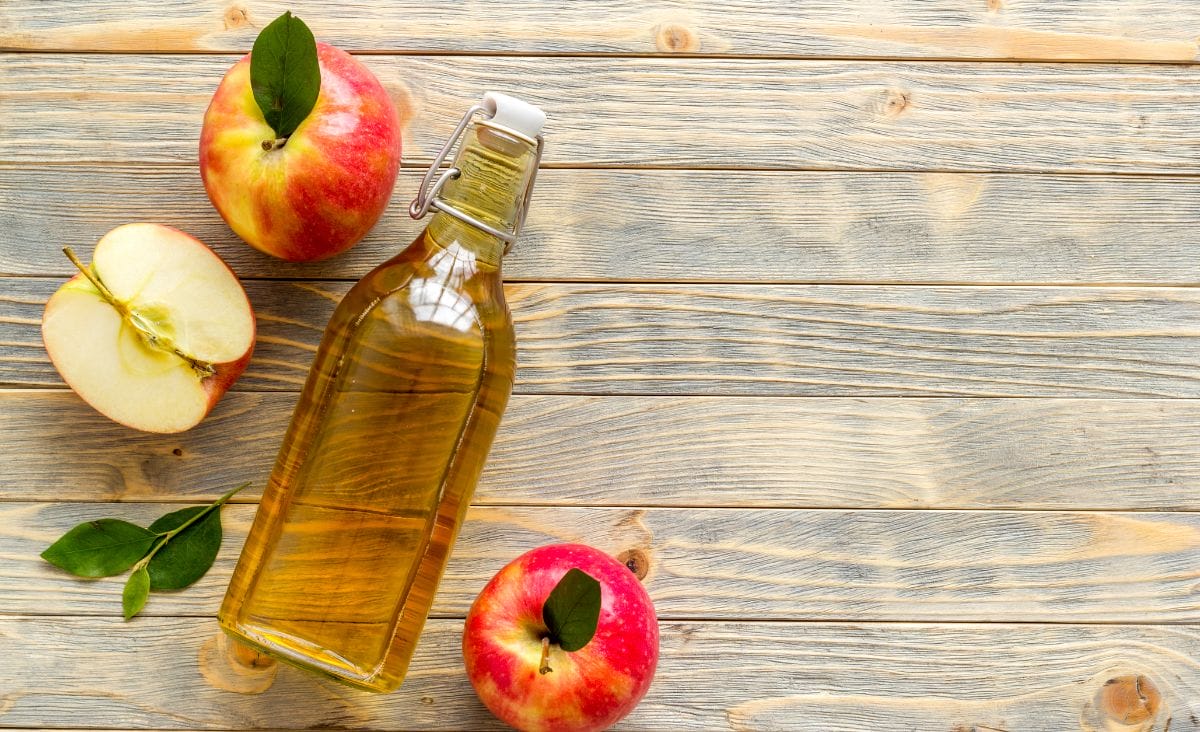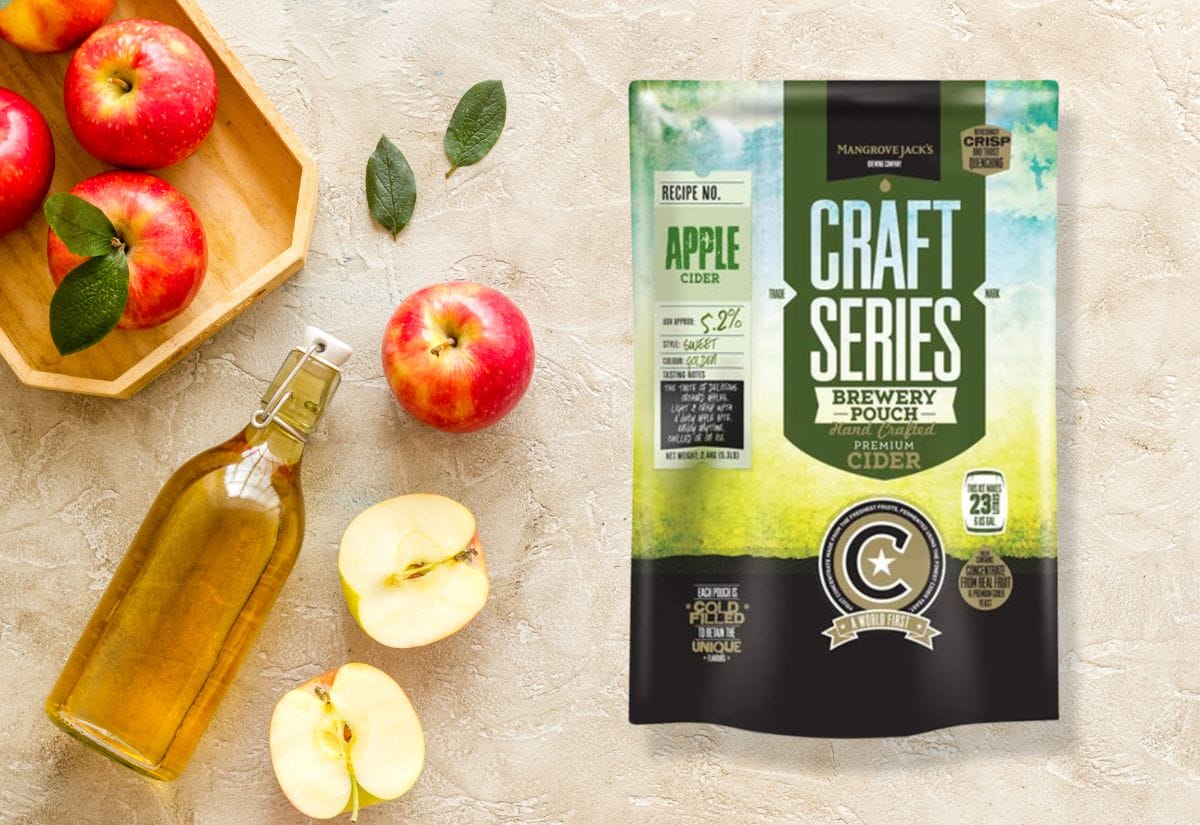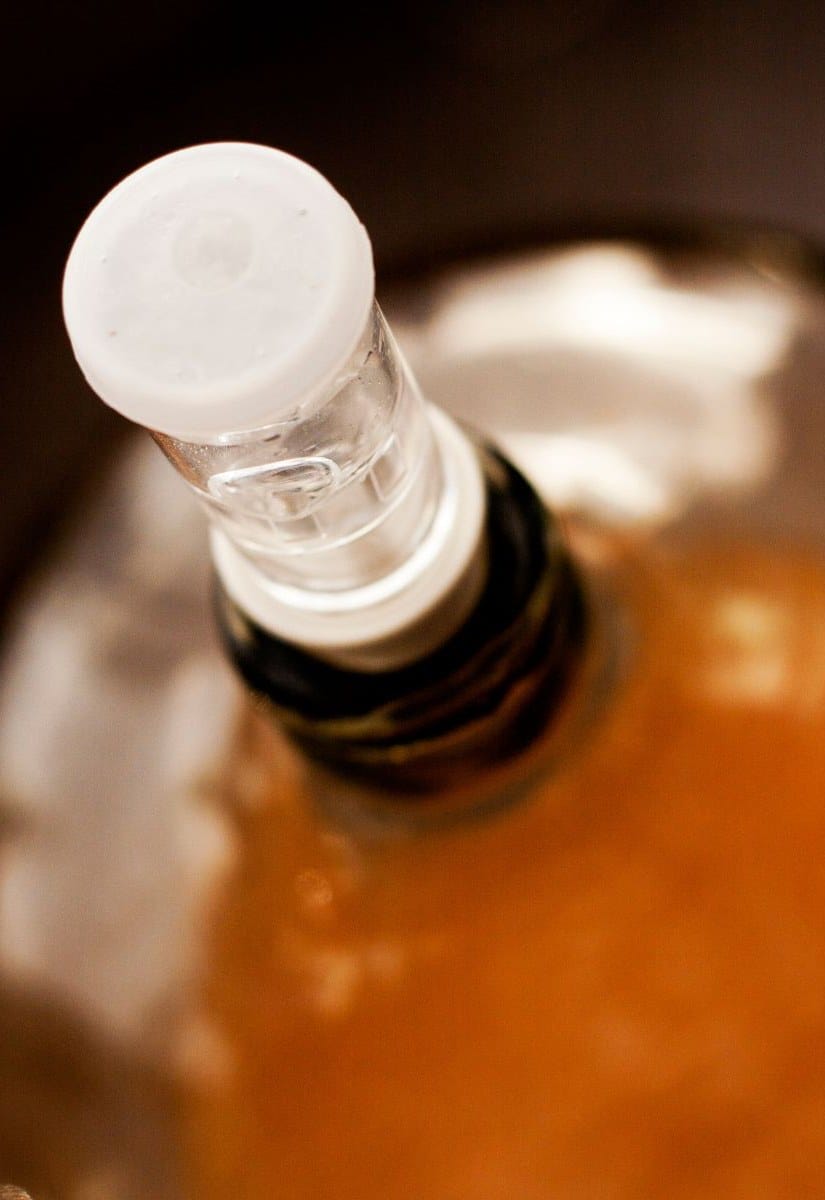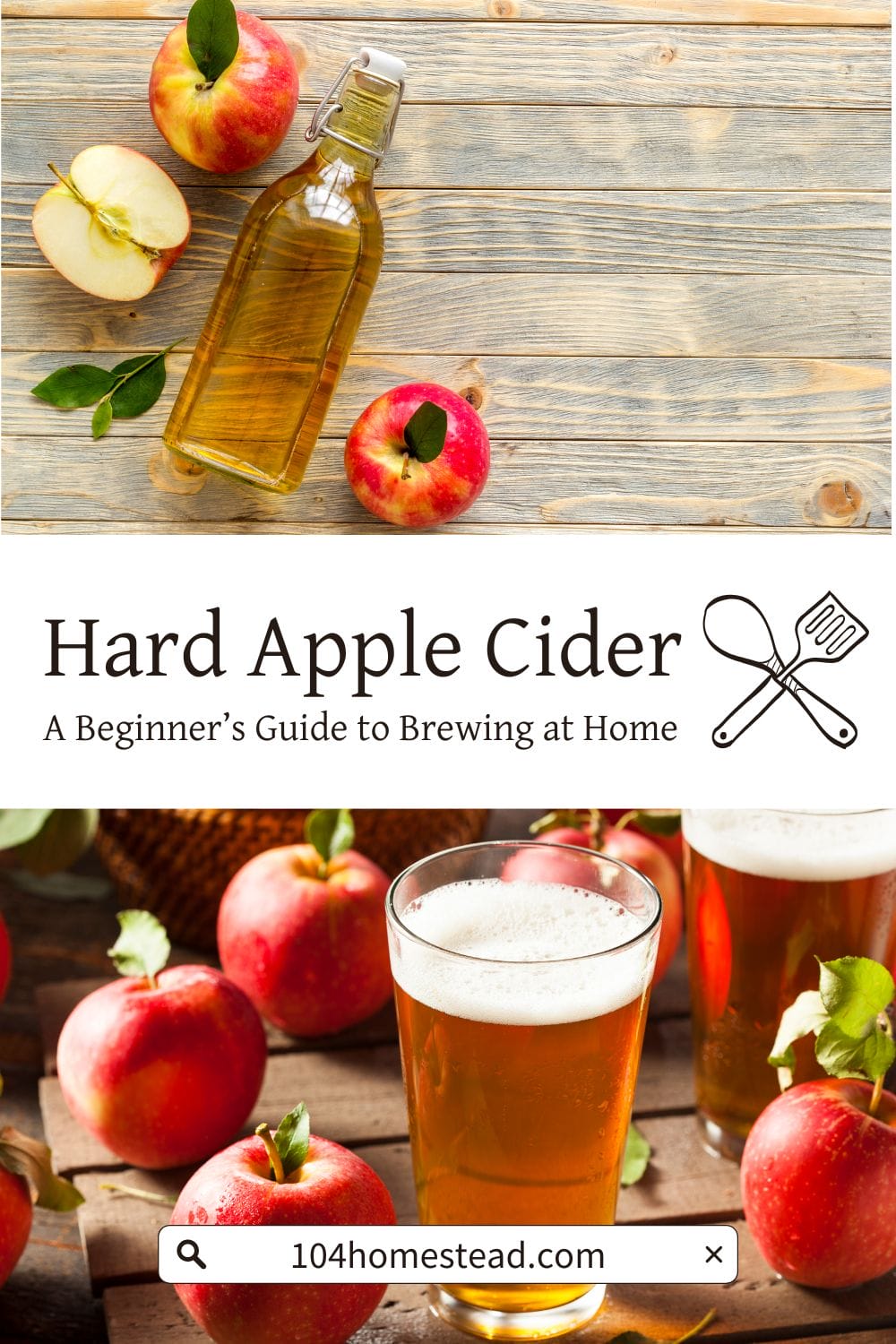A Beginner’s Guide to Brewing Hard Apple Cider at Home
Learn how to make hard apple cider. Avoid common pitfalls and enjoy a delicious, homebrewed cider with a perfect blend of sweetness and tang.

My adventure into homebrewing began with high hopes and ended with a literal bang. I had brought the finished cider upstairs to sample. I had bottled them in some thick, glass Jim Beam bottles and put the crate on top of the dishwasher. Some time later, I loaded and started the dishwasher. That seems unrelated, but it’s not.
Not too long after, there was a terrible crashing sound. I assumed one of the kids had gotten into something they shouldn’t have. I marched right into the kitchen, ready to put on my “mom voice.” Much to my surprise, the ceiling was dripping. Giant shards of glass were embedded into the ceiling and walls. The cider bottles had exploded thanks to the hot steam coming from the dishwasher vent. Oops!
Fear not; exploding cider isn’t a common thing, though I proved it does happen. Don’t let that turn you off from the idea of making it. Just be sure not to store it anywhere that has extremely high temperatures, especially when it has just finished fermenting.
Essential Supplies for Hard Apple Cider
To make hard apple cider, you will need a few supplies. The nice thing is that after you have purchased the initial supplies, there isn’t much you will need to get for future batches.

The Basics:
- A 5-gallon carboy or food-grade bucket with a tight-fitting lid
- Funnel
- Bung and airlock set
- Bottle brush
Bottling Essentials:
- Saucepan (for simple sugar syrup)
- A second 5-gallon container
- 3/8″ Hose
- Bottle capper and caps
- Bottles
Choose Your Ingredients Wisely
Quality Apple Juice: Juiced from fresh apples is the absolute best, but if you have to purchase apple juice from the store, make sure it doesn’t contain sorbate or it won’t ferment. You will need five gallons of apple juice to make 5 gallons/2 cases of hard apple cider.
Tip: To make the best hard apple cider, mix bittersweet, sharp, and sweet apple varieties. For example, use Dabinett apples for their tannins, Granny Smith apples for their sourness, and Fuji apples for their sweetness. This will make a cider that is very well-balanced.
Sweetening the Brew: Normal table sugar works well for fermenting and sweetening. I’ve also had good luck with brown sugar. I’ve heard of people using honey, but that seems pricey to me, and I haven’t tried it myself. Maybe if you have your own hive, it would be worth a try. You will need 2 lbs. of sugar. Feel free to mix and match.
Yeast Selection: You can find yeast at your local homebrew supplier. Some health food stores also carry it, as well as Amazon. I like Red Star Premier Classique Wine Yeast, but I know people have had good results with Red Star Premier Blanc Fermentis Champagne and Red Star Premier Curvee.
Brewing Your Hard Apple Cider
It may seem very intensive, but homebrewing isn’t nearly as hard as it looks. Simply follow these easy steps.
Preparing Your Brew
Be sure to sanitize all of your equipment before you begin. If you use bleach to sanitize instead of the mixes available at the homebrew supply store, be sure to rise very well. Bleach residue will prevent fermentation.
Set aside 1 cup of your sugar. Put it in a tupperware or ziploc bag. You’ll use it later. Pour all but 1 quart of the apple juice into the carboy/bucket using the funnel. Add the sugar, except for the 1 cup you withheld earlier. Carefully shake well.
Add the yeast using the funnel, and wash down any yeast that sticks with the remaining apple juice. You may need to wait for the foam to die down to add all of the remaining juice. Put on your lid if you are using a bucket, and install the airlock.
The Fermentation Process
After you’ve put on the airlock, put the carboy/bucket in a dark corner at about 70ºF. Not being the strongest individual on earth, I find it easiest to set up everything where I plan to leave it during the fermentation. Leave it alone for about four weeks.

Bottling Your Hard Cider
Clean and sanitize your bottles. Repurposing old bottles is completely okay and makes homebrewing much cheaper. Just make sure the caps you buy fit the bottles you’ve collected. As I said, I used old Jim Beam bottles. Do the math ahead of time to figure out how many bottles you will need to hold 5 gallons.
Boil the 1 cup of sugar you saved at the start in about 2 cups of water in a saucepan for about 10 minutes to create a simple syrup. Once cooled, pour the syrup into the bottom of your second carboy/bucket.
Now, you will siphon the cider from the carboy to the bottling bucket (or second carboy) with your ⅜” hose. You may want to leave the bottom 1/2 – 1″ as this is sediment that will cloud your finished product.
If you are fancy (or you plan to homebrew regularly), you can get a spigot for your second bucket, but I just use the 3/8″ hose. I recommend setting up your bucket right next to the sink. Until you get a rhythm, spills will happen. Arrange your bottles so you can easily reach them, and have a towel nearby to place filled bottles. Slowly siphon the hard apple cider from the bucket into your bottles, leaving 1″ of head space for standard beer bottles (a bit more with larger bottles). Once they are all filled, give your bottles a quick wipedown with a bar rag to prevent slipping, and then cap them with the bottle capper.
Aging Your Cider
This is the stage where it’s important not to put your hard apple cider on your dishwasher. Leave your cider alone for two weeks so the simple sugar can carbonate the cider. Any yeast that was stirred up during the bottling will settle at the bottom of the bottles. You can allow your cider to rest for several months to improve the flavor, but I have yet to be patient enough for that.
Enjoying Your Creation
Hard apple cider is a delightful treat, but it packs a punch. Enjoy it responsibly and savor the fruits of your labor.
Serving Suggestions
- Chill Well: Hard apple cider is best enjoyed well-chilled. Refrigerate your cider for at least a few hours before serving to bring out its crisp and refreshing qualities.
- Garnishing: A thin slice of apple or a cinnamon stick can be a festive garnish, especially during the autumn months.
Storage Tips
- Keep it Cool: Store your bottled hard apple cider in a cool, dark place, such as a cellar or a fridge, to maintain its quality and prevent unwanted fermentation from continuing.
- Vertical Storage: Unlike wine, cider is best stored vertically to minimize the contact area between the cider and the air in the bottle, reducing the risk of oxidation.
Troubleshooting
You can make your homemade hard apple cider much better and more consistent if you know and fix these typical problems.
Fermentation Doesn’t Start
- Cause: Yeast may be old or inactive, or the temperature is too low.
- Solution: Ensure the yeast is not expired and the fermenting environment is around 70ºF. If no activity is observed within 48 hours, add a new fresh packet of yeast.
Cider is Too Sweet
- Cause: Fermentation may have been incomplete, or too much sugar was added.
- Solution: Check if fermentation has fully stopped by measuring if the specific gravity is stable over a few days. If the fermentation process has not progressed far enough, check that the temperature is right and think about adding more yeast.
Cider is Too Dry
- Cause: All the sugar has been fermented, leaving little residual sweetness.
- Solution: For future batches, monitor fermentation closely and stop it by chilling the cider once it reaches your desired sweetness. For the current batch, back sweeten with non-fermentable sweeteners like erythritol or add fresh apple juice before serving.
Cloudy Cider
- Cause: Yeast in suspension fermentation.
- Solution: Time often resolves cloudiness as particles settle.
Off-Flavors or Smells
- Cause: Contamination, stressed yeast, or exposure to oxygen.
- Solution: Ensure all equipment is sanitized properly. Use the right amount of yeast and maintain a stable fermentation temperature. Limit oxygen exposure by using an airlock and bottling carefully.
Frequently Asked Questions
As you savor the fruits of your hard cider labor, why not explore more culinary delights that celebrate the humble apple? For those who enjoy a sweet treat without gluten, my Gluten-Free Apple Crumble recipe promises a delectable dessert that pairs wonderfully with a glass of your homemade cider. And, to spread the apple love even further, discover how to make rich and savory apple butter in a slow cooker—a perfect companion for your morning toast or a unique addition to your favorite recipes.
If you’ve found value in this blog post and enjoyed reading it, why not share it with your Pinterest community? Pin the image below and spread the love!

Hard apple cider made at home is the beginning of a long and interesting journey of tradition, creativity, and adventure. The entire process, from the start to the satisfying pop of a newly opened bottle, is gratifying. As you master the art of cider making, remember to experiment with different apple varieties, tweak the sweetness to your liking, and share your creations with friends and family. Who knows, your kitchen might just become the next go-to cidery in your circle!
Have you tried your hand at brewing your own hard cider? Share your thoughts and stories in the comments section below. Let us learn from and be inspired by each other’s brewing adventures!

Hard Apple Cider Recipe
This post may contain paid links. If you make a purchase using the links in this recipe, I may earn a commission.
Equipment
- 2 5-gallon Carboys or food-grade bucket with lids
- 1 Airlock + Bung
- 1 3/8" Hose
- Bottle Capper and Caps
- Bottles
Ingredients
- 5 gallons Apple Juice preservative-free
- 2 lbs Sugar (1 cup reserved) table or brown
- 1 packet Wine or Champagne Yeast Red Star Premier Classique
- 1 cup Sugar
Instructions
- Sanitize all equipment thoroughly.
- Reserve 1 cup of sugar. Pour apple juice into the carboy, leaving out 1 quart. Add the remaining sugar and shake well.5 gallons Apple Juice, 2 lbs Sugar (1 cup reserved)
- Add yeast through the funnel. Use remaining juice to rinse any stuck yeast into the carboy. Attach the lid and airlock.1 packet Wine or Champagne Yeast
- Ferment in a dark place at 70ºF for 4 weeks.
- Boil the reserved sugar in 2 cups of water to make syrup. Cool and add to a second container. Siphon cider from the carboy, leaving sediment behind. Fill bottles, leaving 1″ of headspace. Cap the bottles.1 cup Sugar
- Age bottles in a cool, dark location for at least two weeks before enjoying.

